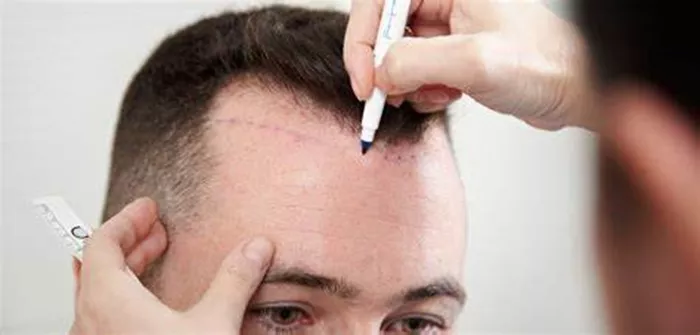Hair transplants are a popular solution for hair loss. They involve moving hair follicles from one part of the body to another. This is usually from the back or sides of the scalp to the balding areas. The procedure is known for its effectiveness. It provides natural-looking results.
Types of Hair Transplants
There are two main types of hair transplants:
Follicular Unit Transplantation (FUT):
This involves removing a strip of scalp from the donor area. The strip is then dissected into individual follicular units. These units are implanted into the balding areas.
Follicular Unit Extraction (FUE):
This method involves removing individual hair follicles from the donor area. These follicles are then transplanted into the balding areas.
Both methods have their advantages and disadvantages. FUT may leave a linear scar. FUE, on the other hand, does not leave a noticeable scar but can be more time-consuming.
Reasons for Needing a Second Hair Transplant
Several factors may necessitate a second hair transplant:
Insufficient Coverage:
The initial transplant may not provide the desired density. This can be due to limited donor hair or unrealistic expectations.
Continued Hair Loss:
Hair loss can continue after the transplant. This may require additional transplants to maintain a full appearance.
Refinement:
Some patients may want to refine the results of the first transplant. This can involve improving hairline design or increasing density.
Scar Correction:
In cases where the first transplant leaves noticeable scars, a second procedure can help to camouflage them.
See also: How Long After Hair Transplant Will I See Results?
Factors Affecting the Success of a Second Hair Transplant
Several factors can influence the success of a second hair transplant:
Donor Hair Availability:
The availability of sufficient donor hair is crucial. If the donor area is depleted, a second transplant may not be feasible.
Scalp Condition:
The condition of the scalp is also important. Scarring from the first transplant can affect the success of a second procedure.
Health and Age:
The patient’s overall health and age can influence the outcome. Younger, healthier patients generally have better results.
Technique and Surgeon Skill:
The technique used and the skill of the surgeon are critical. Experienced surgeons can achieve better results, even in challenging cases.
Preparing for a Second Hair Transplant
Proper preparation is key to the success of a second hair transplant:
Consultation:
A thorough consultation with a qualified surgeon is essential. This will involve assessing the donor area, scalp condition, and discussing expectations.
Medical Evaluation:
A medical evaluation is necessary to ensure the patient is fit for surgery. This may involve blood tests and other assessments.
Realistic Expectations:
Setting realistic expectations is important. Patients should understand the limitations and potential outcomes of a second transplant.
The Second Hair Transplant Procedure
The second hair transplant procedure is similar to the first one. However, it may be more complex due to factors like scarring and limited donor hair. The steps involved include:
Donor Hair Extraction:
Depending on the technique, this involves either removing a strip of scalp (FUT) or individual follicles (FUE).
Recipient Site Preparation:
The balding areas are prepared to receive the transplanted follicles. This involves making tiny incisions.
Graft Placement:
The extracted follicles are carefully placed into the recipient sites. This requires precision to ensure natural-looking results.
Post-Operative Care:
Proper care after the surgery is crucial for the success of the transplant. This includes following the surgeon’s instructions on washing, avoiding sun exposure, and taking prescribed medications.
Recovery and Results
Recovery from a second hair transplant is similar to the first one. Patients can expect some swelling, redness, and scabbing in the donor and recipient areas. It is important to follow post-operative care instructions to ensure proper healing.
Timeline for Recovery
First Week:
Swelling and redness should subside. Scabs may form and start to fall off.
First Month:
Transplanted hair may fall out, which is normal. New hair growth typically begins after a few months.
Six Months:
Significant air growth should be noticeable. Full results can take up to a year.
Risks and Complications
As with any surgical procedure, there are risks and potential complications associated with a second hair transplant:
Infection: Proper care and hygiene are essential to prevent infections.
Scarring: There is a risk of additional scarring, especially if the first transplant left noticeable scars.
Poor Growth: In some cases, the transplanted hair may not grow as expected. This can be due to various factors, including poor blood supply to the recipient area.
Numbness: Temporary numbness in the donor and recipient areas is common. It usually resolves over time.
Managing Expectations
It is important for patients to have realistic expectations about the outcome of a second hair transplant. While the procedure can provide significant improvements, it may not completely restore a full head of hair. Patients should understand that achieving the desired density may require multiple sessions.
Conclusion
A second hair transplant can be an effective solution for those who did not achieve their desired results from the first procedure. Proper preparation, realistic expectations, and choosing a skilled surgeon are key to a successful outcome. While there are risks and potential complications, many patients find that the benefits of a second hair transplant outweigh the drawbacks. With careful planning and expert care, it is possible to achieve a fuller, natural-looking head of hair through multiple hair transplant procedures.
You May Be Interested In

